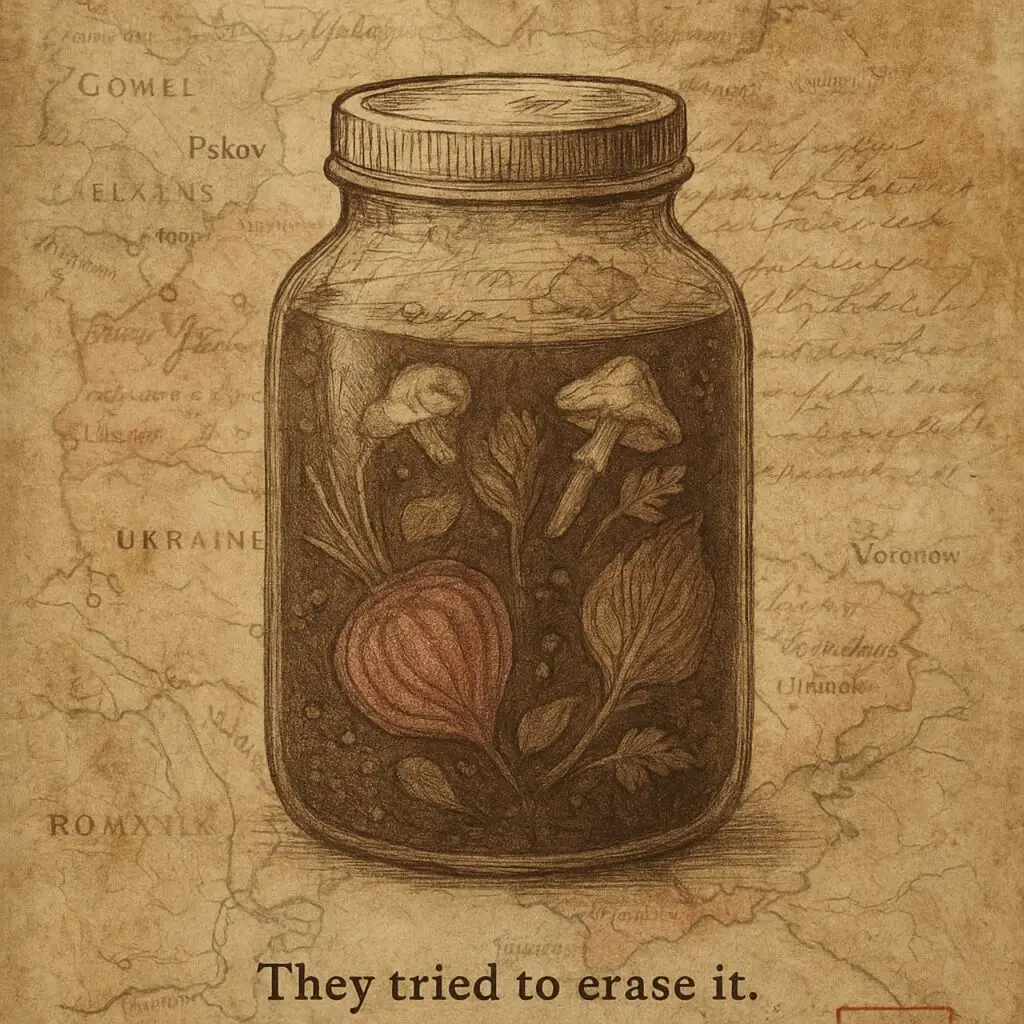
Kvass: A Drink They Tried to Erase
What we’ve got here is more than a beverage—it’s a cultural artifact. A quiet rebellion in a glass. Kvass tells the story of how the simplest things—black rye, water, a pinch of salt—can carry the spirit of an entire people.
In the 1950s, the Soviet Union banned kvass—not because it was dangerous, but because it was alive. Too alive. Too close to the old ways. Too full of knowledge passed down through breath, not bureaucracy. They tried to sterilize tradition. Replace the home with the factory. Replace ferment with fizz. But even the Soviet machine couldn’t erase the power of a bubbling jar of life hidden in someone’s pantry.
And now—here we are again.
Modern society, sleepwalking through supermarket aisles, is rediscovering its hunger. A hunger not just for nourishment, but for truth. For food that remembers. For medicine that doesn’t need a brand name. Kvass is rising again not because it’s fashionable, but because it carries memory. And because we are starving.
The EU has tried to restrict home fermentation in the name of “safety.” Corporations have filled our shelves with sterile imitations of what once was a daily ritual. And yet—just like before—it’s bubbling back. From kitchens, gardens, and community workshops. The great-grandmother’s whisper is louder than their regulations.
📖 Pyotr Mikhailovich Kurennov & Russian Folk Medicine
Pyotr Mikhailovich Kurennov (also known as Paul M. Kourennoff) was a Russian physician and ethnographer who dedicated his life to preserving the healing traditions of his homeland. His seminal work, Russian Folk Medicine, serves as a comprehensive compendium of herbal remedies, fermentation techniques, and holistic practices rooted in centuries of Slavic culture.
Kurennov didn’t write with caution. He wrote with urgency. He preserved not just recipes, but resistance—medicine that grew in the cracks. Mushroom tinctures, sour soups, root tonics, and yes… kvass.
“The mother with no meat. The boy with cold hands. Give them the black rye kvass, twice a day, warm with garlic.”
This wasn’t just poetic—it was precise. Kvass was medicine for the people. Community-strengthened, field-tested, and pantry-born.
🛑 The 1950s Ban: Suppression of Traditional Knowledge
In the 1950s, the Soviet regime sought to centralize and control medical practices, viewing folk medicine as unscientific and potentially subversive. Kurennov’s work, which celebrated decentralized, community-based healing, was deemed a threat. Russian Folk Medicine faced censorship, and its dissemination was severely restricted.
But the knowledge refused to die. In 1970, an English translation was published by W.H. Allen. 213 pages of what reads like a survival manual disguised as a cookbook.
🍞 Kvass: A Symbol of Resilience
Within the pages of Russian Folk Medicine, kvass isn’t just a drink—it’s a survival tool. Kurennov describes its role in treating anemia, restoring digestion, stabilizing blood sugar, and supporting long-term vitality. When medicine collapsed, kvass remained. During famine, war, and nuclear fallout—it remained.
☢️ Kvass in the Shadow of Catastrophe
There’s a story—half-forgotten, half-whispered—from the aftermath of Chernobyl. Amidst the panic, what some remembered weren’t pills, but barrels of kvass. Folk tales spoke of radiation-absorbing mushrooms—Chaga and Birch Polypore—growing wild on the contaminated bark, used by forest-dwelling babushkas who added them into kvass to protect the marrow.
Kurennov recorded how kvass, brewed correctly with rye and roots, could act like a chelating agent, pulling metals from the gut. Kvass was a biochemical shield.
🥶 Sniper's Kvass
Another haunting tale: Russian snipers and wilderness trackers during WWII were sent into Siberian forests for weeks. They carried concentrated kvass bricks—dried rye cakes. Rehydrated with wild herbs or river water, it became a survival drink that stabilized blood sugar, warmed the gut, and kept the mind sharp.
Kurennov argued it wasn’t vodka or rations that got them through—it was kvass. Living, microbial, and quiet as the trees around them.
🔥 The Home Apothecary Rises Again
Today, kvass is returning—not because it’s trendy, but because people are starving for life-giving food. They’ve tasted the emptiness of off-the-shelf iron pills, the fizz of sugar-loaded kombucha, and probiotic capsules that feel dead on arrival.
Kvass calls to us from the past. A living, microbial drink you brew in your own kitchen. It’s unpredictable, wild, and alive—and that’s where its magic lies.
This is the medicine of our grandmothers’ kitchens. A homegrown pharmacy in a glass jar, created by the rhythms of life itself. Something to make, to share, to pass on. A quiet rebellion against a system that sold us the lie that health comes from a bottle.
Kurennov’s work teaches us that food is not just sustenance—it’s memory, it’s identity, it’s resistance. And kvass? Kvass remembers us. And now, we remember it.
